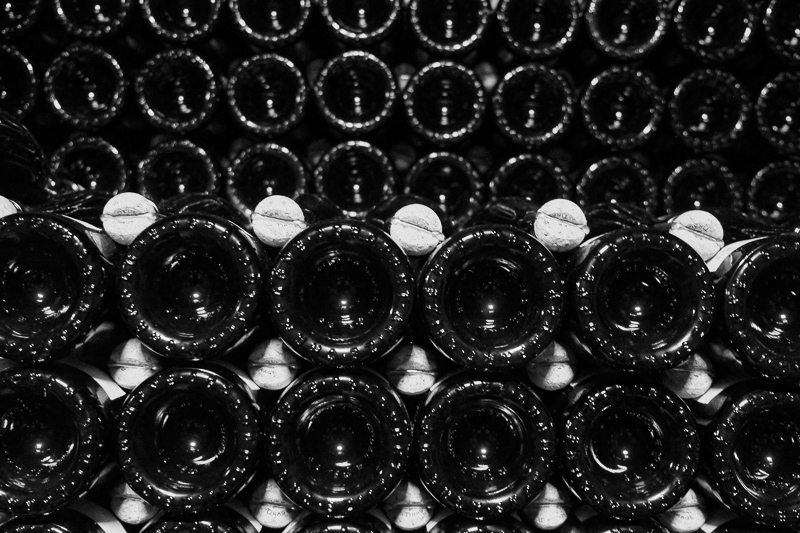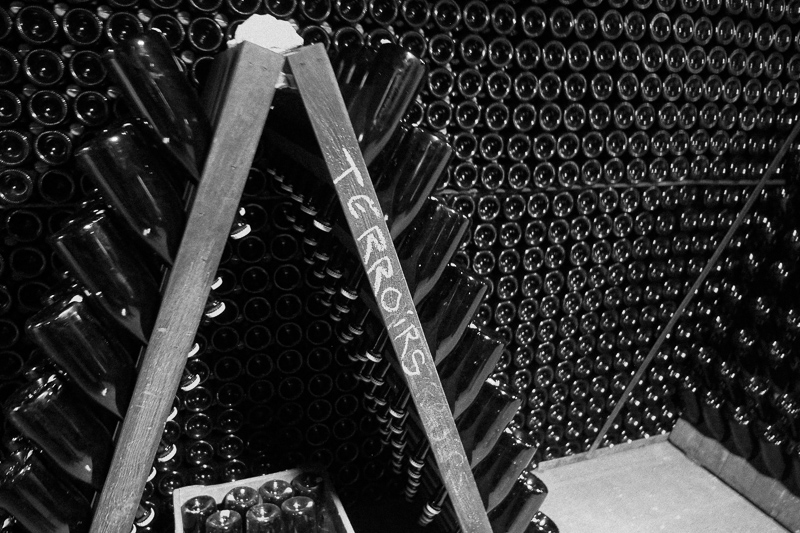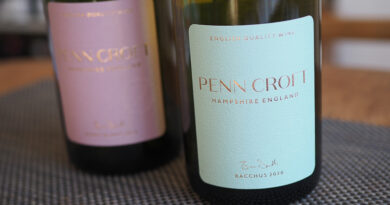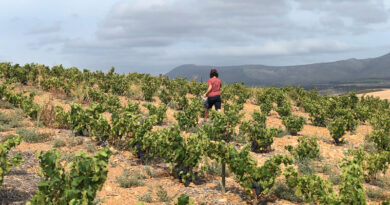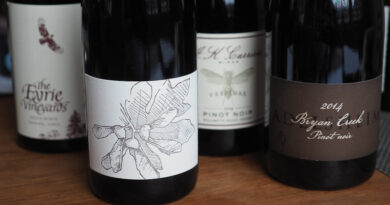In Champagne: Agrapart & Fils
Founded in 1894, Champagne Agrapart & Fils has rightfully emerged as one of the finest grower estates in the Côte des Blancs. Pascal Agrapart is the current generation overseeing the estate, making wines since 1984 when he took over from his father, Pierre, and after studying oenology in Bordeaux, and at home in Avize. When he arrived to the house there were 4 hectares of vines, which he has now grown to 12 hectares, 9 of those rooted in grand cru villages of Avize, Cramant, Oiry and Oger. His father never used herbicides or chemical pesticides, and though Pascal is uninterested in being labelled organic or biodynamic, he follows the same naturalist practices, focusing on the soils. He farms 90% Chardonnay, and 10% Pinot Noir.
“My father didn’t use herbicides, and I continued the same way, working the soil” reflects Pascal. “After, when I bought another vineyard, and I compared the taste, the wine from the vineyard mechanically weeded was better than the wine using chemical herbicides. So I decided to work the soil.”
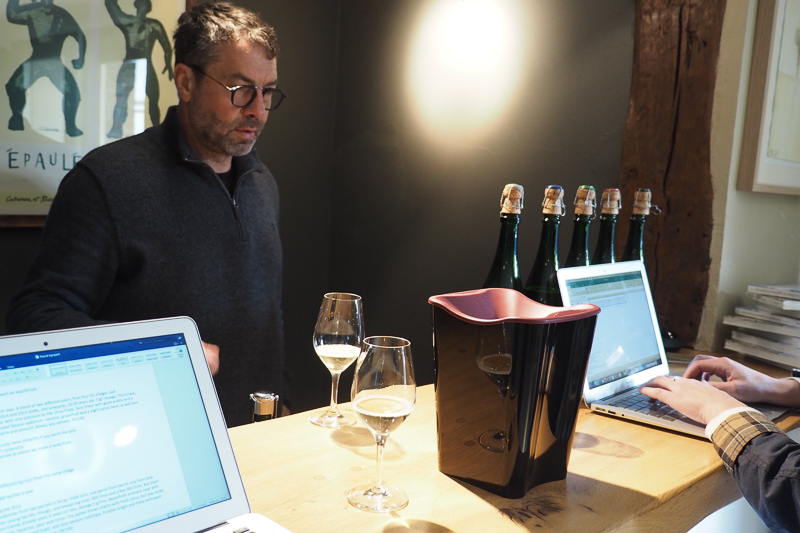
The focus on the soils continued to shape his wines and portfolio. “I noticed that there is a similar taste between different years, so I concluded the soil has a good influence on the wine, in the same way as it does in Burgundy. In 1995 I began to make the Minérale cuvée, and from 1999, the Avizoise cuvée, both from different soils: one with more clay and one with more chalk.” Today in addition to his NV wines, he makes vintage wines from the three different terroirs in Avize: Minérale is chalk based; Avizoise is clay based; and Vénus (first produced in 2001) is from clay and chalk together.
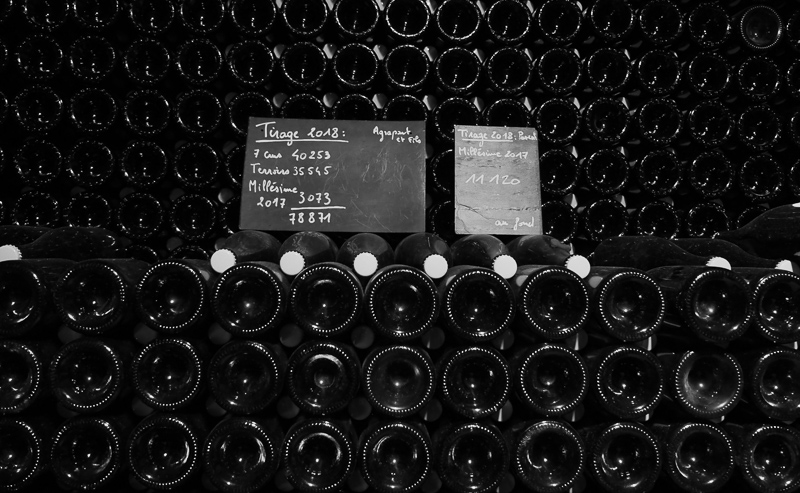
Pascal believes the vines are at their best after they reach 20 years of age, when they reach equilibrium with their environment. “The minerality in wines is expressed when you work the soils, and the vines have established deep roots. Acidity is not minerality.”
The wines are always native fermented, which he feels is crucial to the expression of terroir. The vintage wines are vinified entirely in older 600L oak casks, while the NV wines are in tank at first, and then moved into barrel for six months’ elevage. All the wines go through full MLF. Reserve wines are kept in a mix of cask and stainless (50/50).
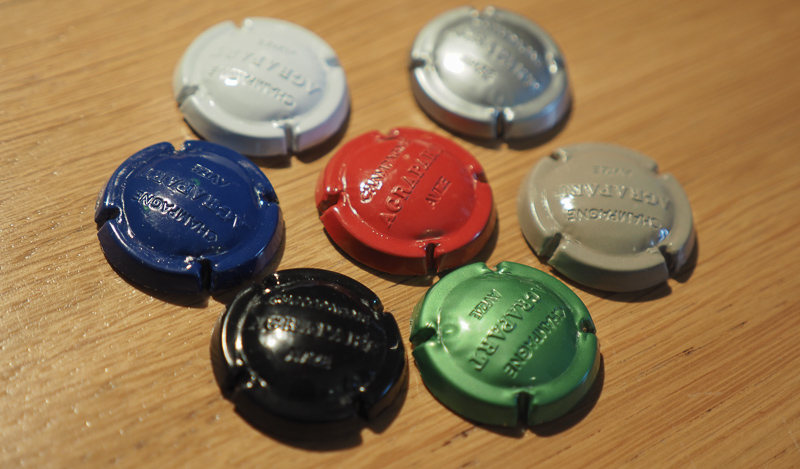
The house produces around 100,000 bottles / year, and the wines are all smartly packaged with different colour plaquettes for each cuvée (a placomusophile’s dream).
Since 2016 Pascal has been consulting for one of Canada’s leading sparkling wine producers: Benjamin Bridge in Nova Scotia.
THE WINES
Champagne Agrapart & Fils 7 Crus NV, Champagne, France
60% from 2015, 40% 2014. 90% Chardonnay, 10% Pinot Noir. 7 g/L dosage. Premier Crus and some Grand Crus that don’t make the cut, perhaps from young vines or from the end of the press. This stays on lees from 24-36 months (this is 34). Really focused and taut with a lovely lemony core. Very pure with a bit of richness in the mid-palate. There’s a sense of harmony here: pure, linear and focused with subtle hints of toast and nuts under the pure lemony fruit. Lovely understated style with finesse but also a bit of depth. 92/100 (JG)
Named for the 7 villages from which this wine is sourced. This bottle blended 2015 (60%) and 2014 (40%), with a 90/10 Chardonnay/Pinot Noir blend. This spent 24-36 months on lees, and was disgorged with 7 g/L RS. Green apple, white florals, white peach lead the tight and pretty palate, with a gentle plumping of pinot noir on the mid, and a brace of stainless steel briskness on the finish. Black plaquette. 90/100 (TR)
Champagne Agrapart & Fils NV Complantée, Champagne, France
‘The terroir is more important than the cepage for me,’ says Pascal Agrapart. ‘You can get the cepage mixed up with some terroirs.’ This is a blend of different grapes from Avize. Planted in 2002, 2003, the three traditional varieties plus the other three grapes. Vinified in barrel. 5 g/l dosage. It’s a blend of 2015 and 2014. This is really bright and lively with hints of cherries, brisk lemon and lime, and some almond hints. Very bright and expressive with lovely purity and focus. Really taut and focused with a slight pithiness. Very youthful and distinctive. 93/100 (JG)
Illustrating his belief that terroir is more important than grapes, this cepage comes from a single plot of cofermented grapes around their house in Avize, planted in 2002 and 2003. The blend is based on Chardonnay and Pinot Noir, with smaller parts Pinot Meunier, Petit Meslier, Arbane, and Pinot Blanc. This bottle is a 2015/2014 blend, and dosed with 5 g/L. White florals, white peach and lemon rules, with a grippy, chalky texture that holds throughout, and rises on the finish. Quite distinctive, and certainly a wine of place. Red plaquette. 91/100 (TR)
Champagne Agrapart & Fils NV Terroirs, Champagne, France
36-48 months on lees. A blend of two different years, from four GC villages, just Chardonnay. 2014 and 2013 (60%). Old vineyards, 20-50 years old. 5 g/l dosage. This is taut, pure and linear with nice precision to the citrus fruits. Very linear with good acidity and a compact, focused flavour spectrum. Lemons, grapefruit and a slight saline twist, as well as a hint of patisserie and almond. Makes you salivate. 93/100 (JG)
From four villages and Chardonnay vines aging 20-50 years, this bottle was based on 2014 and 2013, with 40% reserve wines. After 36-48 months on lees, it was dosed with 5 g/L. Sharp and focused, with lemon, grapefruit, roasted almonds, wet chalk and a tight riffing grip housing the energetic, linear palate. Fantastic tension throughout to a mouth-watering finish. Green plaquette. 93/100 (TR)
Champagne Agrapart & Fils 2012 Minérale, Champagne, France
Chardonnay from two parcels in Avize, chalk soils, one parcel from barrel, one from tank. Never young barrels, though, and always big ones: 600 litres and a few 300 litres. Buy them from friends already used. 6 years on lees, dosage 3 g/litre. Beautifully aromatic nose with almonds, hazelnut, pear and citrus. The palate shows vitality with fresh citrus, but also notes of cream, bread and toast, and nice savoury nuttiness. Finishes bright and linear with keen acidity. So much energy here. 94/100 (JG)
From two Avize Chardonnay parcels rooted in very chalky soils, and vines 50-60 years. One vinification is done in old 600L barrels, and the other in tank before a 50/50 blend. This spent 6 years on lees, and was dosed with 3 g/L. Salt wash, green apple, lemon stream through the sleek, linear palate, culminating with a humming grip on the finish. Very much alive, and extremely finessed. Blue plaquette. 94/100 (TR)
Champagne Pascal Agrapart 2012 Avizoise, Champagne, France
This comes from a vineyard with clay soils, which Pascal likens to the argile calcaire soils common in Burgundy. His three vintage wines have just 600 metres between the different parcels, and the age of the vines is similar – 50-60 years old – but the wines taste very different because of the soils. Vinification is just in barrel, 3 g/litre dosage. The second fermentation is under cork (as with his cuvée Vénus). This is so different to Vénus and Minerale, with perfumed almond and wax on the nose with apple and pear fruit. There are herbs with some nuts and peach, showing a rounded generosity, but also good acidity and focus. There’s so much complexity here, with richness and depth, but also nice focus. Thrilling. 95/100 (JG)
From the clay soils of Avize, and 50-60 year old Chardonnay vines, this cuvée was fermented in barrel and rested under cork (agrafé) with 6 years on lees, and 3 g/L dosage. Powerful, round and expansive, this is richer and darker in hue and profile, with the weight of the clay and tirage drawing generous apple, roasted hazelnut, light wax, and subtle smoked notes. According to Pascal, the bottle is always better the second day. Taupe plaquette. 93/100 (TR)
Champagne Agrapart & Fils 2012 Vénus, Champagne, France
This parcel has chalk at the top and clay at the bottom. Venus is the name of Pascal’s horse, and this vineyard has no mechanical intervention, and so no compaction of the soil. Second fermentation on cork, no dosage. This is a complete wine, with some rich pear, apple and toast notes overlaying brisk citrus fruit, with a real sense of minerality. There’s some generosity, but also a tension and keen acidity. There’s enough generosity to overcome the lack of dosage. Very fine and detailed. 95/100 (JG)
Vénus is the name of his horse, who joined the team at the end of 1999. This blanc de blancs blends the clay from the bottom of the slope, with the chalk from the top. It was fermented in barrel, and aged under cork (agrafé) for 6 years prior to dégorgement with zero dosé. Tight lemon, green apple, and ample minerality drives this wine, with bracing acidity, and gripping chalky texture. There’s a kiss of meringue and roasted almonds on the tight palate, with a lovely lily pad of lees depth from the clay and elevage. Very serious, with ample energy and verve on the palate. Silver plaquette. 95/100 (TR)
Champagne Agrapart & Fils 2014 Exp., Champagne, France
Made with grapes from 2014 and juice from 2015. All the wine in Champagne, perhaps 6% is not from grape – additions such as water to multiply yeast, or sugar. My idea is only to make a wine just from grapes with no addition. It’s a concept wine. For the first fermentation it’s not a problem, wild yeast and no chaptalization. Second fermentation in May you normally add sugar and yeast, so I thought I could wait until the next harvest when there’s sugar from grapes and natural yeast from the second fermentation. And then there is no dosage added. This is complex and intriguing with nuts, wax and herbs, as well as some pithiness. There’s freshness and good acidity, with compact, taut flavour and notes of lemons and green apples. Linear and with potential for development. Such an interesting wine. 94/100 (JG)
As the name suggests, this was an experimental and conceptual wine, with just the juice from the grape going to ferment, without any added sugar or water. For the first fermentation, he used grapes from 2014, fermented naturally. He then kicked off the secondary ferment with 20% still-sweet juice from the 2015 vintage. There is just a tiny bit of sulphur added throughout the entire process, so he views this as a truly natural wine. It’s a project Pascal had been envisioning since 2002, and was first realized in 2007. This was aged under cork (agrafé) and finished with zero dosage. Green apple, wet stones, pear skin, lemon pith, slightly wilted florals is lofty with brisk acidity to a snappy finish. Less precise than the rest of the portfolio, and certainly adventuresome. White plaquette. 92/100 (TR)
Find these wines with wine-searcher.com


